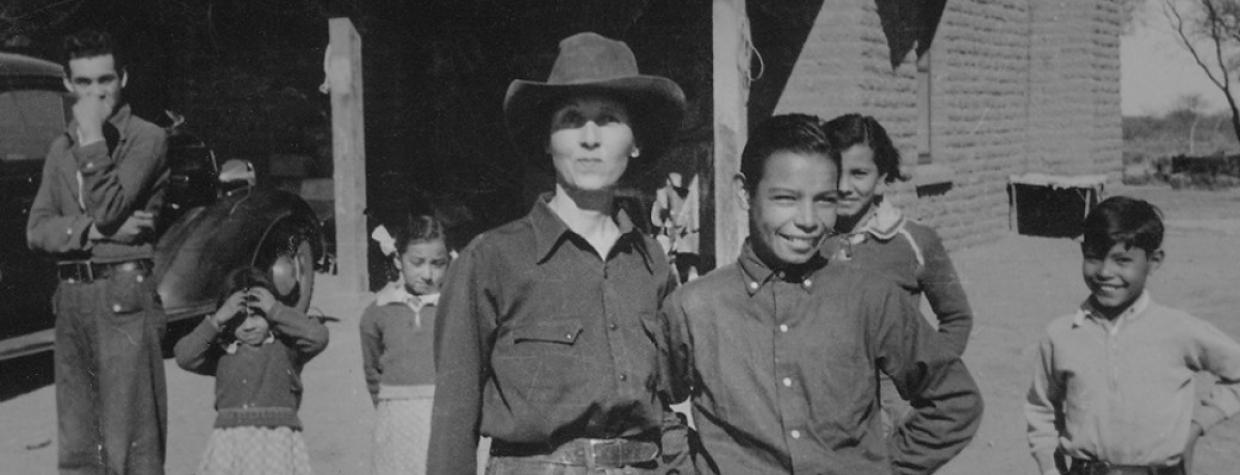By her own account, Eulalia “Sister” Bourne was “by no means a typical teacher.” And likewise, Baboquivari School was no ordinary school.
Located at the foot of the Baboquivari Mountains in Southern Arizona, the remote school was conducted in the 1930s in “whatever temporary quarters [were] convenient for the two landholders in the six-township district.”
Bourne wrote an engaging account of one year at the school in Nine Months Is a Year at Baboquivari School. That year, the school shared the household of the Aros family and their 15 children on the Quarter-Circle DV Bar Ranch.
Bourne stayed at the school during the week, rising at 3:30 a.m. Monday mornings to travel 100 miles from her homestead in the San Pedro Valley over mostly unpaved roads. She packed her car and a week’s worth of groceries — including food for the students’ hot lunches and for her two dogs and two birds.
“Our establishment [has] no icebox or refrigerator,” she wrote. “The only plumbing in the ranch house is the little sink under the half-window in my room. Bill, clerk of the board, put it in last year.”
School instruction included fingernail inspections and administration of cod-liver oil. Students might be excused from class for haircuts (given by the school “bus” driver) or because of cattle rushed into the corral across the courtyard during roundup. Bourne called the latter “a great event … outranking all legal holidays, saint days, Christmas and even the Tucson rodeo.”
Bourne is best known for the Little Cowpuncher, a newspaper written by her students and sent to readers as far away as Europe, South Africa and Australia. She called it “a group enterprise binding us together in a common purpose. … The high aim is literature — an attempt to hold the mirror up to life as we live it here, a record of what happens to us.”

